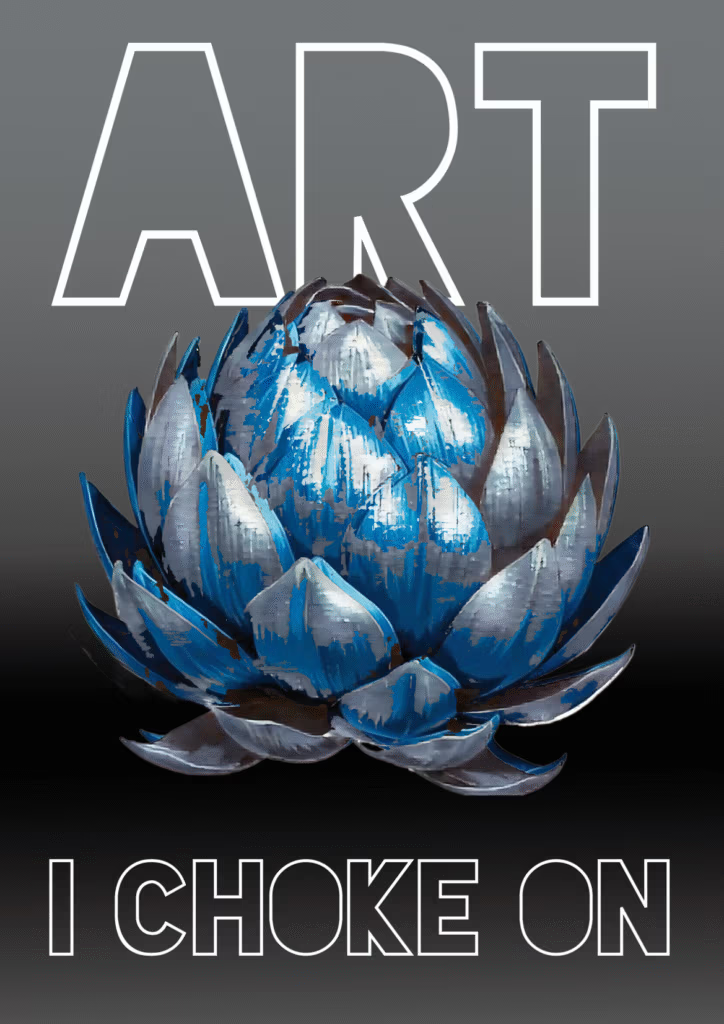When we see a picture of an artichoke or see one in real life, we immediately think of the word “artichoke.” When we hear or see the term “artichoke,” we simultaneously have an image of the plant in our minds. What’s more, depending on our background knowledge and experience, it is then clear that we are dealing with a large edible flower bud or, more precisely, the unopened inflorescence of a thistle-like plant. In this poster, the artichoke takes center stage, albeit as an artistically depicted flower bud, but primarily as a representative of the contrasting interpretations that arise from its name, or rather from the name extended by a small preposition. Take a closer look at the word “artichoke” and break it down into its constituent parts: the noun “art,” the personal pronoun “I,” the verb “choke,” and add the preposition ‘on’ to the verb—this gives you the meaningful phrase “art I choke on.” “Art” acts as an eye-catcher and theme above the artichoke image, while “I choke on” acts as a statement about the theme below the artichoke. This results in a minimalist poster consisting of three elements and a dichotomous separation between positive and negative interpretations of the statement.
The artichoke metaphor works positively because artichokes are difficult to eat, but the reward is considered a delicacy in the heart—something that is worth the effort. Thus, “art I choke on” becomes art that is so rich, so rewarding, so intensely beautiful that it overwhelms the senses in the most wonderful way. It’s like choking with joy instead of frustration.
At the same time, the metaphor works negatively because art can be like poorly prepared, tough artichoke leaves that you have to struggle through, that you literally cannot swallow/accept, and that literally stick in your throat because of their bitterness and inedibility. In the end, there is too much work for too little reward.

 Posted on July 19, 2025
Posted on July 19, 2025  by arslohgo
by arslohgo 0
0